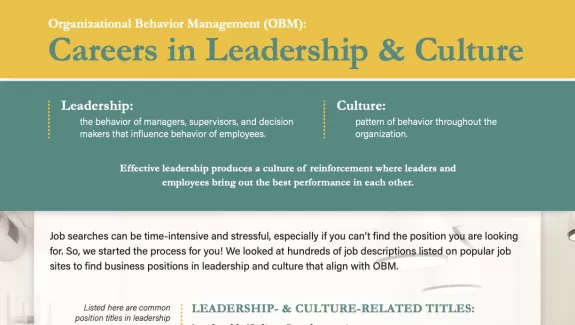Operant Innovations 023 | OBM Series: Leadership & Culture | Shauna V. Costello
Let's continue our exploration of the answer to this question - "What can I do with a degree in behavior analysis other than clinical work?". In a recent blog and infographic series, produced by Vince Bello & ABA Technologies, an exploration of the subfields and job titles of OBM were explored. Today we will be looking into the skills you would need to land a job in a Leadership & Culture role. Remember: Don't judge a job by it's title!
-
Leadership & Culture Infographic | Leadership & Culture Blog
-
For more professional development training in OBM, check out the OBM Specialist Certificate brought to you by ABA Technologies, Inc.
TRANSCRIPT
Shauna Costello (00:17):
You're Listening to Operant Innovations, a podcast brought to you by ABA Technologies. To continue our talk about professional development and the ever-growing question of what can you do with behavior analysis other than clinical work? I wanted to focus on the field of organizational behavior management. A recent blog and infographic series was published by Vince Bellow in collaboration with ABA technologies. This series started with his quest to find a job in OBM to hear the first episode, listen to OBM series prerequisite skills. This week we'll be focusing on jobs related to leadership and culture. Leadership can be defined as the behavior of managers, supervisors, and decision-makers who influence the behavior of employees. Culture is a pattern of behavior throughout the organization. Effective leadership produces a culture of reinforcement where leaders and employees bring out the best performance in each other. By breaking down leadership and culture, you get behavior. Behavior is taught and learned.
Shauna Costello (01:15):
The science of behavior is key. Leadership ultimately shapes what the organizational culture will consist of. Right? Well, halfway, right. The culture of a new company starts with the leadership, but leadership is typically a small percentage of a company. Culture change often happens from the bottom up. Culture is something you want to cultivate, not force. Culture changes do not occur overnight. Changing the behaviors of employees throughout an organization is an ongoing process in which leadership plays an important role. Leaders are the decision-makers of the organization, and therefore they're responsible for providing the time and resources needed to support cultural development. The goal here is a process called institutionalization. Institutionalization can be defined as keeping interventions in place to ensure performance continues to improve versus what we might be used to hearing as maintenance, which is removing the intervention and measuring at the behavior change still occurs.
Shauna Costello (02:17):
Many interventions involve making a change or starting a program, then not supporting them. When these interventions are supported, they might produce temporary performance improvements, but the behavior will decline over time because employees aren't or can't contact reinforcement and make sure you're never judging a job by its title. Luckily, some positions are made specifically for the goal of improving culture and these types of interactions. A few job titles include Leadership Culture Development, People in Culture Management, and Organization Design and Culture. Notice though, not a single one of these job titles includes the letters OBM and there'll be very difficult to find a job that includes OBM in the title. But again, that doesn't mean that OBMers can't fit into these positions well. Once you dig deeper into the job descriptions, you'll be able to see familiar recurring skills that are often listed as requirements. Some of these job descriptors include observed leaders during interactions with the direct reports and deliver performance feedback, analyze and design reinforcement systems used by leadership to promote performance improvements, analyze and assess communication systems between leadership at various levels of the organization and frontline employees, deliver and receive performance feedback to other leaders and direct reports.
Shauna Costello (03:43):
OBMers are trained to link behaviors, to key metrics. They are trained in tools and assessments such as the picnic, the performance diagnostic checklist, process mapping, behavioral systems analysis, pinpointing, feedback, reinforcement systems, and more. So answer me this, with their training tools and experience, how could OBMers not influence leadership and culture to affect organizational performance overall? For more information on these leadership and culture skills, please see the links in the episode description and come back as we continue to dive deeper into some of the fields relating to OBM, including behavior-based safety, performance management, behavioral systems analysis, and training and development. And as always, if you have questions, comments, feedback, or suggestions, please feel free to reach out to us at ooperantinnovations@abatechnologies.com



Leave a reply